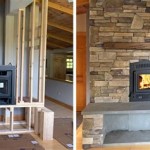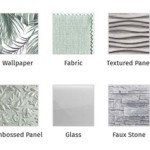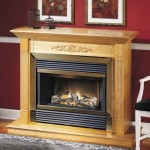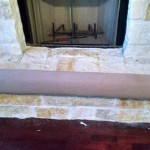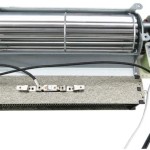Understanding Fireplace Vent Covers: Functionality, Selection, and Installation
Fireplace vent covers, also known as fireplace draft blockers or fireplace plugs, are devices designed to seal off the fireplace opening when it is not in use. This seemingly simple item plays a crucial role in improving home energy efficiency, preventing drafts, and contributing to overall home comfort. Understanding the different types of vent covers, their benefits, and proper installation techniques is essential for homeowners looking to optimize their fireplace for both aesthetic appeal and practical function.
Fireplaces, while providing warmth and ambiance, can become significant sources of energy loss when not in operation. The chimney flue acts as a direct pathway to the outside, allowing heated air to escape during the winter and cool air to escape during the summer. This constant exchange contributes to higher heating and cooling bills, placing an unnecessary strain on HVAC systems.
Beyond energy efficiency, fireplaces can also introduce unwanted drafts, pest intrusions, and unpleasant odors into the home. The open flue provides an easy access point for cold air, insects, rodents, and even rainwater. The stagnant air within the chimney can also carry unpleasant smells, particularly during humid weather or after periods of disuse. A properly installed fireplace vent cover effectively addresses these concerns, providing a barrier against these undesirable elements.
Key Point 1: Types of Fireplace Vent Covers
The market offers a variety of fireplace vent covers, each with its own materials, design, and installation method. Choosing the right type depends largely on the fireplace size, shape, and the homeowner's specific needs and preferences. It is crucial to measure the fireplace opening accurately before selecting a cover to ensure a proper fit and effective seal.
Inflatable Plugs: These vent covers consist of a durable, inflatable bladder typically made of heavy-duty vinyl or rubber. They are inserted into the chimney flue and then inflated to create a tight seal. Inflatable plugs are particularly well-suited for fireplaces with irregular shapes or sizes, as they can conform to the contours of the flue. They are reusable and relatively easy to install and remove. However, it's crucial to ensure the plug is properly inflated to maintain an effective seal. Over-inflation can damage the plug, while under-inflation can result in air leakage.
Magnetic Vent Covers: These covers utilize a magnetic sheet that adheres to the metal frame surrounding the fireplace opening. They are typically constructed from a flexible, magnetic material and are available in various sizes and designs. Magnetic vent covers are easy to install and remove, requiring no tools or specialized skills. However, their effectiveness depends on the fireplace having a ferromagnetic metal frame that the magnet can adhere to. They may not be suitable for fireplaces with stone, brick, or other non-magnetic surrounds. The magnets must be strong enough to hold the cover securely in place, and the surface should be clean for optimal adhesion.
Foam Plugs: Foam plugs are typically made from high-density polyurethane foam and are designed to fit snugly into the fireplace opening. They are available in various shapes and sizes, and some can be custom-cut to fit specific fireplace dimensions. Foam plugs offer good insulation properties and effectively block drafts. They are relatively inexpensive and easy to install. However, they may not be as durable as inflatable plugs and may deteriorate over time. It's important to choose a foam plug that is fire-resistant and dense enough to provide an adequate seal.
Chimney Balloons: Similar to inflatable plugs, chimney balloons are inflatable devices specifically designed to seal off the chimney flue above the damper. They are made from durable materials and are inflated to create a tight seal. Chimney balloons are particularly effective at preventing drafts and heat loss because they seal the entire chimney flue, not just the fireplace opening. They are reusable and can be easily deflated and stored when the fireplace is in use. However, they require careful installation to ensure they are properly positioned and inflated. It's crucial to remember to remove the balloon before lighting a fire.
Custom-Made Vent Covers: For fireplaces with unusual dimensions or aesthetic requirements, custom-made vent covers can be a viable option. These covers are typically fabricated from metal, wood, or other materials and are designed to fit the fireplace opening precisely. Custom vent covers can be tailored to match the fireplace's style and décor, providing both functionality and aesthetic appeal. However, they are generally more expensive than standard vent covers and may require professional installation.
Key Point 2: Benefits of Using Fireplace Vent Covers
The advantages of utilizing a fireplace vent cover extend beyond simple draft prevention. These devices contribute significantly to energy conservation, home comfort, and the overall well-being of the indoor environment.
Reduced Energy Bills: By sealing off the fireplace opening, vent covers minimize heat loss during the winter and heat gain during the summer. This reduces the workload on heating and cooling systems, leading to lower energy consumption and reduced utility bills. The savings can be substantial, especially in homes with poorly insulated fireplaces or chimneys. The cumulative effect of preventing even small drafts can significantly impact energy efficiency over time.
Improved Home Comfort: Eliminating drafts from the fireplace creates a more comfortable and consistent indoor temperature. This eliminates cold spots near the fireplace and prevents drafts from affecting other areas of the house. A more comfortable environment reduces the need to constantly adjust thermostats, contributing to both energy savings and improved well-being.
Pest and Debris Prevention: Fireplace flues can serve as entry points for insects, rodents, and other pests. A vent cover acts as a barrier, preventing these unwanted guests from entering the home. It also prevents debris such as leaves, twigs, and bird nests from accumulating in the chimney, which can pose a fire hazard. Maintaining a clean and pest-free chimney is essential for both safety and hygiene.
Odor Control: Stagnant air in the chimney can develop unpleasant odors, particularly during humid weather or after periods of disuse. A vent cover helps to seal off the chimney, preventing these odors from entering the home. This contributes to a fresher and more pleasant indoor environment. The control of odors can be particularly beneficial for individuals with sensitivities or allergies.
Protection from Rain and Snow: Rain and snow can enter the chimney flue and cause damage to the fireplace and surrounding structures. A vent cover provides a barrier against moisture, preventing water damage and extending the lifespan of the fireplace. Preventing water intrusion can also help to prevent the growth of mold and mildew within the chimney.
Key Point 3: Installation and Maintenance
Proper installation is crucial for ensuring the effectiveness of a fireplace vent cover. While some types are relatively easy to install, others may require professional assistance. Regular maintenance is also important for prolonging the lifespan of the cover and ensuring its continued functionality.
Installation Considerations: Before installing a vent cover, it is essential to measure the fireplace opening accurately to ensure a proper fit. For inflatable plugs and chimney balloons, follow the manufacturer's instructions carefully. Over-inflation can damage the plug or balloon, while under-inflation can result in air leakage. For magnetic vent covers, ensure that the metal frame surrounding the fireplace is clean and free of debris for optimal adhesion. For foam plugs, consider using a utility knife to trim the plug to fit the fireplace opening precisely. When in doubt, seek professional assistance from a qualified fireplace installer.
Safety Precautions: Always remove the vent cover before lighting a fire. Failure to do so can result in smoke and carbon monoxide buildup in the home, posing a serious health hazard. Store the vent cover in a safe and easily accessible location when the fireplace is in use. It is also advisable to install a carbon monoxide detector in the home to provide an early warning of any potential carbon monoxide leaks.
Maintenance Procedures: Regularly inspect the vent cover for signs of damage or wear. For inflatable plugs and chimney balloons, check for leaks or punctures. For magnetic vent covers, ensure that the magnets are still securely attached and that the surface is clean. For foam plugs, check for deterioration or crumbling. Replace the vent cover if it is damaged or no longer providing an effective seal. Cleaning the vent cover periodically will help to remove dust, dirt, and debris, ensuring its continued functionality and aesthetic appeal.
Professional Inspection: Consider having the fireplace and chimney inspected annually by a qualified chimney sweep. This inspection can identify any potential problems with the fireplace, chimney flue, or vent cover. A professional inspection can also ensure that the fireplace is operating safely and efficiently.
Selecting and using a fireplace vent cover is a simple yet effective way to enhance home energy efficiency, improve comfort, and protect against unwanted intrusions. By understanding the different types of vent covers available, their benefits, and proper installation and maintenance techniques, homeowners can make informed decisions that optimize their fireplace for both aesthetic appeal and practical function.

Vent Cover Set 9x80 Cm 3x For Fireplace With Straight Glass Pane Kratki

Vent Corner Cover Set 3x 54 7x76 6 Cm Fireplace Right Sided Kratki

Termination Cap Cover For Direct Vent Fireplace Draft Stopper

Fireplace Vent Covers Stop Drafts Instantly

Leye Magnetic Fireplace Draft Stopper Cover To Block Cold Air From Vent Prevent Heat Loss Magnet Screen Indoor Chimney Blocker Covers 40 X 4

Termination Cap Cover For Direct Vent Fireplace Draft Stopper

Remove Or Cover Up Old Heatilator Vents Hearth Com Forums Home Fireplace Brick Makeover

Magnetic Fireplace Vent Covers Draft Stoppers 30sizes In

Magnetic Fireplace Draft Stopper Vent Covers Screen Insulation Blocker For Winter Indoor Prevent Cold Air And Heat Loss Black Temu

6 X42 New Heavy Duty Magnetic Fireplace Vent Covers Most Powerful Usa Made
Related Posts

